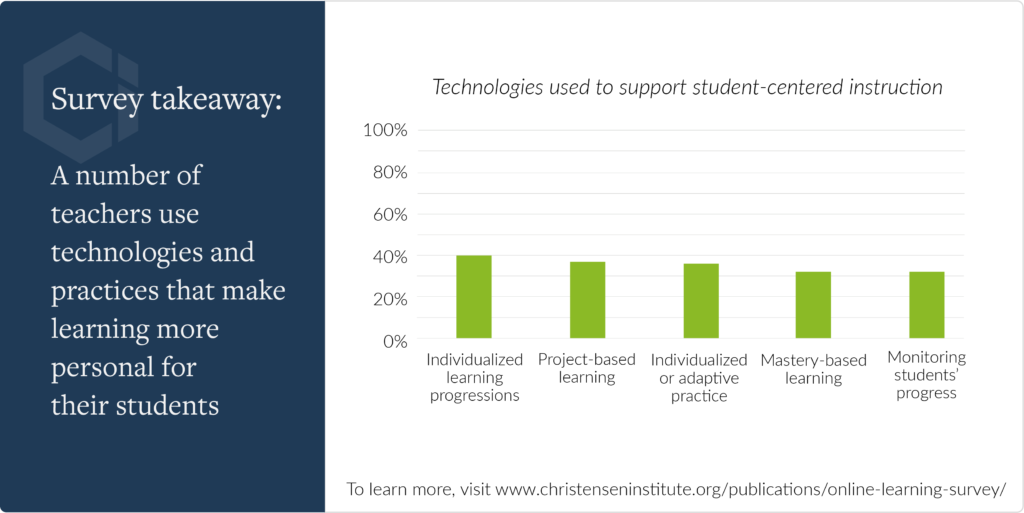
Coronavirus
Breaking the Mold: How a global pandemic unlocks innovation in K–12 instruction
In early 2020, the global coronavirus pandemic rocked the world—and the arc of the online learning trend bent in heretofore unimaginable ways.
Global Education Insights
This article is part of The Center For Innovation Global Education Insights Series : a series of authorised translations and republications of some of the best education innovation articles, research papers, interviews, and other materials from around the world.
Source: Christensen Institute
Author: Thomas Arnett
Original Publication Date: January 11th, 2021
Reading Time: 5 minutes
INTRODUCTION
Slowly but steadily over the last decade, online learning expanded its role within K–12 schools: many districts bought devices and upgraded connectivity, some assignments and textbooks moved to the cloud, software increasingly displaced worksheets, and internet research became a norm. Then in early 2020, the global coronavirus pandemic rocked the world—and the arc of the online learning trend bent in heretofore unimaginable ways.
Practically overnight, the spread of COVID-19 caused a sudden shutdown of classroom-based instruction—the centuries-old emblem of formal education. Fortunately, the capabilities of the technological era—in which broadband connectivity, mobile communication, and video conferencing are increasingly common—meant that for the first time in world history, schools have had a substantive way to keep learning going while brick-and-mortar school buildings are shuttered. Nonetheless, by most accounts, the transition has not been easy.
At the Christensen Institute, we’ve spent the last decade studying trends in online and blended learning out of interest in their potential to enable student-centered learning. Yet in ways we never anticipated, COVID-19 brought these modalities to the forefront. As this new reality unfolds, we continue to document both the challenges and the innovations happening across the US K–12 landscape.
As our latest work on this front, we’ve launched what will be a series of nationally-representative surveys of teachers and education administrators that will capture snapshots of instructional practices during the pandemic. The complete findings from our first survey, along with details about our survey methodology and sample, are available in an accompanying report. This brief highlights interesting findings from the first survey, discusses trends in instructional practice that could redefine education in years to come, and offers theory-based insights and recommendations for both powering through the pandemic and evolving toward a more student-centered future.

THE FACE OF COVID-19 INSTRUCTION: CONVENTIONAL CLASSROOMS ONLINE
The data from our first survey confirms a well-documented trend during the pandemic: measures to prevent the spread of COVID-19 have made remote and hybrid instruction the new normal. What our survey uniquely reveals, however, is that many current approaches to remote and hybrid instruction aim to replicate the conventional classroom experience online.
Whereas classroom-based instruction is inherently a live experience, remote instruction can involve varying degrees of synchronous or asynchronous interaction. When we asked teachers how much of their instruction is synchronous vs. asynchronous, nearly half reported teaching via live synchronous instruction each day for the equivalent of a regular school day.
Additionally, the materials and technologies teachers use tend to be those geared for synchronous instruction. Only 22% of teachers use commercial materials designed for remote instruction – which tend to cater to asynchronous learning. Instead, most teachers come up with their own resources, adapt conventional classroom curriculum for remote instruction, or curate materials from various online sources. Likewise, the technologies teachers use most are the types of technology most often used for migrating conventional classes to the cloud—such as learning management systems and video streaming. In contrast, tools for facilitating student-centered practices such as mastery-based learning and individualized learning pathways are far less common.
Altogether, the survey data reveals a striking pattern: many teachers are attempting to replicate their traditional classroom-based instruction over video calls.
Innovation insights:
Teachers’ tendency to replicate conventional practices online seems like a missed opportunity given the promising range of student-centered strategies that online learning can enable—such as mastery-based learning and individualized learning pathways. Yet this bias toward conventional instruction makes perfect sense when we consider the practical tradeoffs educators face. Teachers and schools are up against unprecedented challenges, and they’ve had little time to prepare for innovative instruction. Under these pressing circumstances, the idea of adapting well-known conventional practices for remote instruction seems far more simple and surefire than trying to discover and implement new student-centered approaches.
It’s going to take more than a massive shift to remote, online instruction for student-centered practices to become widespread. Online learning can facilitate student-centered learning, but online learning is not inherently student-centered.
Recommendations:
Drawing on some of our prior research on why teachers change their practices, we see two main pathways for encouraging teachers to adopt more student-centered learning during COVID-19.
The first pathway involves helping more teachers make incremental steps toward student-centered learning. As the survey results show, most teachers will tend to adapt conventional classroom-based practices for remote instruction. As they do this, however, student-centered practices can make it into their teaching repertoires if new practices offer pragmatic ways to help teachers better cover their material and engage their students. To encourage adoption of student-centered practices, administrators should offer teachers tools and practices that are easy to learn and easy to incorporate into their instruction. For example, administrators might encourage teachers to record the lessons they present during video calls and then post those lessons online where students can review the lessons at their own pace. Likewise, edtech companies should offer simple-to-use tools that help teachers enhance and share their online lessons with their students.
The second pathway involves identifying and supporting the subset of teachers who come to see conventional practices as fundamentally broken. As the challenges of the pandemic continue, some teachers will feel that they are consistently failing at meeting their students’ needs. At that point, they will face a professional fork in the road. They will feel compelled to either radically change their instructional models or else make a clean break from their current teaching assignments.
If their schools and districts give them support and latitude to experiment with new approaches, they will likely take the first option and try flipping their classrooms or making their units mastery-based and student-directed. But if their schools and districts expect them to follow a rigid plan, they will likely look for options outside the district such as leading a learning pod, starting their own micro-schools, or taking a break from teaching altogether. School system leaders who create pockets within their systems where these teachers can experiment will succeed at both retaining these teachers and launching laboratories for innovative practices.

